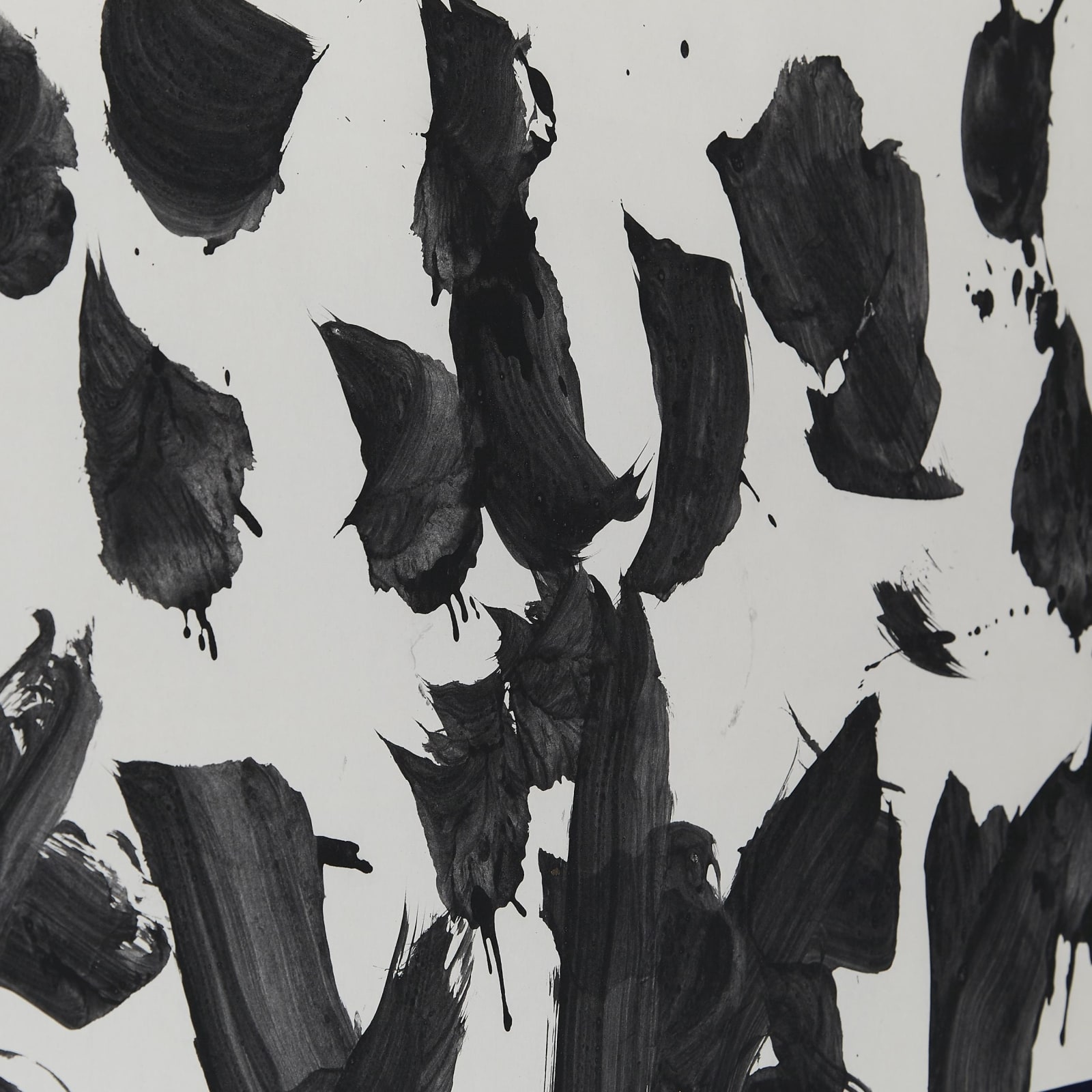Inoue Yūichi (1916–1985)
Iijanaika (Let it be!)
Ink on paper, hanging scroll
With a label signed by Unagami Masaomi
Seal: Yu
78.3 x 140.5 cm
117 x 141.8 cm (overall)
Further images
Literature
Unagami Masaomi, ed. Yu-ichi Inoue Catalogue Raisonné 1949–1985 vol. 3. Tokyo: UNAC TOKYO, 2000.
It is difficult to perceive the contents of this calligraphic work at first glance. Across a sheet of arm-span wide paper, the vigorous brush movements left trails and splatters of ink with adhesive, as if these were beaten fiercely over the surface. If one traces the written lines closely, one may hear the yelling of the words: Iijanaika iijanaika (Let it be! Let it be!).
Besides his signature single-character calligraphy, Yuichi has produced many multiple-character works, including Jiga-ge, which marks his debut at Shodo Geijutsuin-ten exhibition at the beginning of his career, and the monumental Ah Yokokawa Kokumin-gakko. Another multiple-character work, Kubi ga mogemashita, mogetara mogeta de iijanaidesuka (The brush head is wrenched off; just let it be), executed in the same year, is thought to be connected to the present work. Honest and straightforward, Yuichi seemed to have brushed the present work directly from his mouth and heart, which vigorously speaks of the artist’s energy. Moreover, such words remind one of the rallying cry “Eejanaika” (the dialectal form of iijanaika) of the late Edo period protesting commoners. The present work might be reflecting the post 1980 Yuichi’s yearning for revolutions in the art of sho, despite his declining health condition.
Inoue Yuichi (calligrapher; 1916–1985)
Born in Tokyo. Studied calligraphy under Ueda Sokyu. Co-founded the avant-garde calligraphers group Bokujin-kai (Ink Human Society). His large scale, experimental calligraphy works of single Chinese characters responded to the concurrent international Abstract Expressionism, and breathed new life into the calligraphy world. Regarded as daring and innovative, his works were widely exhibited in Japan and abroad, including the Documenta in Kassel and the São Paulo Biennial.
Besides his signature single-character calligraphy, Yuichi has produced many multiple-character works, including Jiga-ge, which marks his debut at Shodo Geijutsuin-ten exhibition at the beginning of his career, and the monumental Ah Yokokawa Kokumin-gakko. Another multiple-character work, Kubi ga mogemashita, mogetara mogeta de iijanaidesuka (The brush head is wrenched off; just let it be), executed in the same year, is thought to be connected to the present work. Honest and straightforward, Yuichi seemed to have brushed the present work directly from his mouth and heart, which vigorously speaks of the artist’s energy. Moreover, such words remind one of the rallying cry “Eejanaika” (the dialectal form of iijanaika) of the late Edo period protesting commoners. The present work might be reflecting the post 1980 Yuichi’s yearning for revolutions in the art of sho, despite his declining health condition.
Inoue Yuichi (calligrapher; 1916–1985)
Born in Tokyo. Studied calligraphy under Ueda Sokyu. Co-founded the avant-garde calligraphers group Bokujin-kai (Ink Human Society). His large scale, experimental calligraphy works of single Chinese characters responded to the concurrent international Abstract Expressionism, and breathed new life into the calligraphy world. Regarded as daring and innovative, his works were widely exhibited in Japan and abroad, including the Documenta in Kassel and the São Paulo Biennial.





